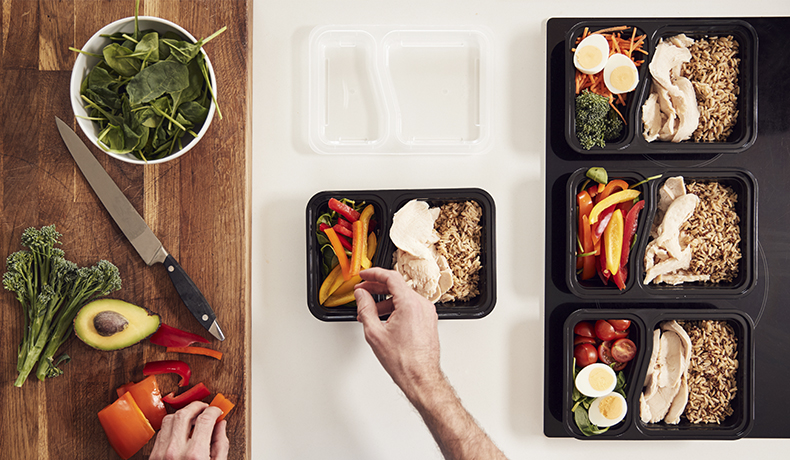
Mastering Portion Control
Through previous blogs, such as The Healthiest Diet in the World, we covered the critical role that the quality of food plays in your health and overall well-being. Simply put, the staples of a nutritious diet are whole grains, healthy fats, lean proteins, fish, fruits, and plenty of vegetables.
However, that doesn’t imply that you can aimlessly gorge on these foods without certain repercussions! The idea is that these nutritious items should build up the majority of your dietary intake.
When it comes to food quantity, mastering portion control is an excellent place to start.
Portion control is an uncomplicated yet powerful approach that empowers you to understand how much food is appropriate to reach your goals.
Instead of focusing solely on calorie tracking, entire food group exclusion, or strict meal plans, portion control offers you the latitude to design your own meals following a proven approach. All tailored to foods you actually enjoy!
So, how is it achieved?
The answer lies in using commonly known household items or even your own hands as measuring tools for food groups!
You may find yourself wondering, with such a straightforward approach, does mastering portion control really bring in the desired results, particularly in terms of weight loss?
Well, we all know the feeling of being served a massive plate of food, particularly after an exhausting day. The immediate impulse is to finish the whole meal and possibly go for seconds. Your reasoning? Maybe you’re making up for an earlier skipped meal, or you don’t want to seem rude or wasteful by leaving leftovers.
This is exactly where portion control comes into play by putting limits in place. If you skipped lunch, that’s a little on you. Perhaps make more time to prioritize your diet in the future. After all, it’s these kinds of unhealthy eating habits that landed you here in the first place, right?
Whether you’re dealing with skipped meals or the guilty feeling of leaving leftovers, portion control remains a constant that deserves your respect if you want to achieve your goals.
When executed diligently, portion control is an extraordinarily efficient strategy for weight loss. Research has shown that portion control can reduce an individual’s caloric intake by nearly one-third, which is typically the caloric deficit needed for healthy weight loss.
Now that you have a firm grasp on the definition of portion control, let’s dive into how it actually works!
Portion control mostly relies on your visual acumen. You don’t need to resort to weighing or measuring food. Instead, keep a mental image of an average computer mouse, a deck of cards, a pair of dice, and a baseball.
Keep these objects in mind when portioning out your meals, focusing particularly on lunch and dinner, to include balanced amounts of proteins, carbohydrates, fats, and fruits or vegetables.
The computer mouse symbolizes your cooked carbohydrate serving size, which can range from rice to pasta to quinoa to couscous, ideally in their whole-grain options.
The deck of cards equates to your protein serving size, approximately two and a half ounces of chicken breast or equivalent alternatives such as beef, fish, or plant-based proteins.
The dice stand for the amount of fats on your plate, and you should aim for healthy sources such as olive oil, avocados, butter, or nuts.
Lastly, the baseball symbolizes the vegetable serving amount, which should be the most substantial serving on your plate.
In the case of fruits, consider them as your go-to snacks to keep off cravings for junk food during the day.
Mastering portion control requires time, practice, and persistence. The more you practice, the more refined your visual estimates will become. Like many aspects of life, if done properly and consistently, it will produce results.
Continue using this system for a couple of weeks and track your progress as you do so!
The results will come, and if you find that they don’t, you may need to ask yourself one of the following questions:
Is my portion sizing accurate? Am I indulging in extra snacks? Am I remaining consistent during weekdays but loosening up over the weekend?
The answer to your plateau might lie in these questions.
Some final tips that may help you along the way:
If you find it challenging to stop eating after a meal, wait around 20 minutes to let your body signal that it’s full. This can be a game-changer in avoiding additional servings.
Chewing sugar-free gum or brushing your teeth right after a meal can also serve as deterrents to indulging in second helpings or dessert. Fluoride and cheesecake do not mix well; trust us, we’ve tried…
When dining out, don’t hesitate to ask for a takeaway box for the leftovers. Restaurants aim for instant customer satisfaction, but their short-term targets shouldn’t affect your long-term objectives. Stick to your portion control strategy and save the rest for tomorrow’s lunch.
Portion control is a simple, straightforward, and effective method for managing food quantities to meet weight-loss goals. If the household object comparisons falter, resort to your hands as a guide: a cupped hand for carbohydrates, the palm for protein, the thumb for fats, and a closed fist for fruits or veggies.
Consider this nature’s blueprint for guiding your consumption.
